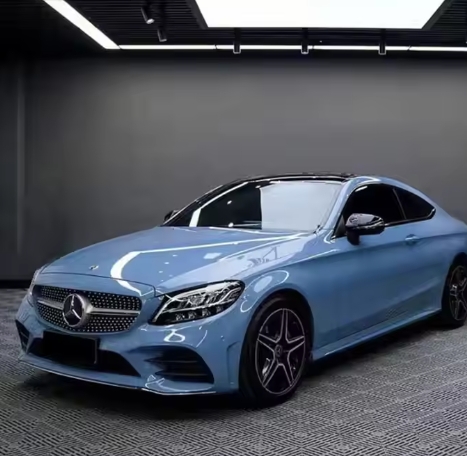The Ultimate Guide to PPF: From Material Technology to B2B Procurement Strategies
Blog post description.
7/19/20252 min read


Introduction
Paint Protection Film (PPF) has become a must-have solution for automotive, marine, and even electronics protection. As a B2B wholesaler, understanding the key differences between TPU vs. PVC PPF, self-healing technology, and procurement strategies can help you maximize profits and meet growing market demand.
This guide will break down:
✅ Material Science: TPU vs. PVC – Which is better for your clients?
✅ Self-Healing Technology: How it works and why it sells at a premium.
✅ B2B Procurement Tips: How to choose the right supplier and negotiate bulk deals.
1. PPF Material Breakdown: TPU vs. PVC
TPU (Thermoplastic Polyurethane) – The Premium Choice
✔ Pros:
High elasticity & durability (lasts 7-10 years).
Self-healing properties (minor scratches disappear with heat).
UV-resistant, preventing yellowing.
Conforms perfectly to curves (ideal for luxury cars).
✖ Cons:
More expensive than PVC.
Requires skilled installation.
Best For: High-end automotive, luxury vehicles, and long-term protection.
PVC (Polyvinyl Chloride) – The Budget Alternative
✔ Pros:
Lower cost (ideal for price-sensitive markets).
Decent protection (3-5 years lifespan).
Easier to install.
✖ Cons:
Less flexible (can crack in extreme cold).
No self-healing capability.
Prone to yellowing over time.
Best For: Fleet vehicles, short-term protection, and budget-conscious buyers.
2. Self-Healing Technology: Why It’s a Game-Changer
Self-healing PPF uses thermal-responsive polymers that "melt" when exposed to heat (sunlight or warm water), filling in minor scratches.
Why It Matters for B2B Sales?
Higher Profit Margins: Self-healing films sell at a 20-30% premium.
Customer Retention: Clients return for re-installations and upgrades.
Brand Reputation: Positions you as a supplier of cutting-edge solutions.
💡 Pro Tip: Market self-healing PPF to luxury car dealerships and detailers—they love upsell opportunities.
3. B2B Procurement Strategies for PPF Wholesalers
Strategy #1: Source from OEM-Certified Factories
Look for ISO 9001 and IATF 16949 certifications (automotive-grade quality).
Verify warranty policies (5+ years is ideal).
Strategy #2: Bulk Order Discounts & MOQ Negotiation
MOQ (Minimum Order Quantity): Negotiate lower MOQs for new product testing.
Volume Discounts: Ordering 1,000+ rolls? Push for 10-15% off.
Strategy #3: Demand Free Samples & Lab Testing
Test adhesive strength, UV resistance, and stretchability before committing.
Avoid suppliers who refuse samples—transparency is key.
Strategy #4: Partner with Factories Offering Private Labeling
OEM/ODM services let you brand PPF under your own logo.
Great for building brand loyalty in competitive markets.
4. Market Trends: Where Is PPF Demand Growing?
📈 Automotive: EVs (Tesla, Rivian) need PPF due to soft paint.
📈 Marine: Yacht owners use PPF for hull protection.
📈 Electronics: Some manufacturers now apply PPF to gadgets.
Hot Markets for 2024:
North America (highest adoption rate).
Middle East (extreme heat increases PPF demand).
Europe (strict paint protection regulations).
5. Case Study: How a Wholesaler Increased Margins by 25%
Challenge: A US-based distributor was stuck selling low-margin PVC PPF.
Solution:
Switched to TPU self-healing PPF from a certified factory.
Bundled with installation training for clients.
Launched a private-label program.
Result:
25% higher margins in 6 months.
40% repeat order rate from detailers.
